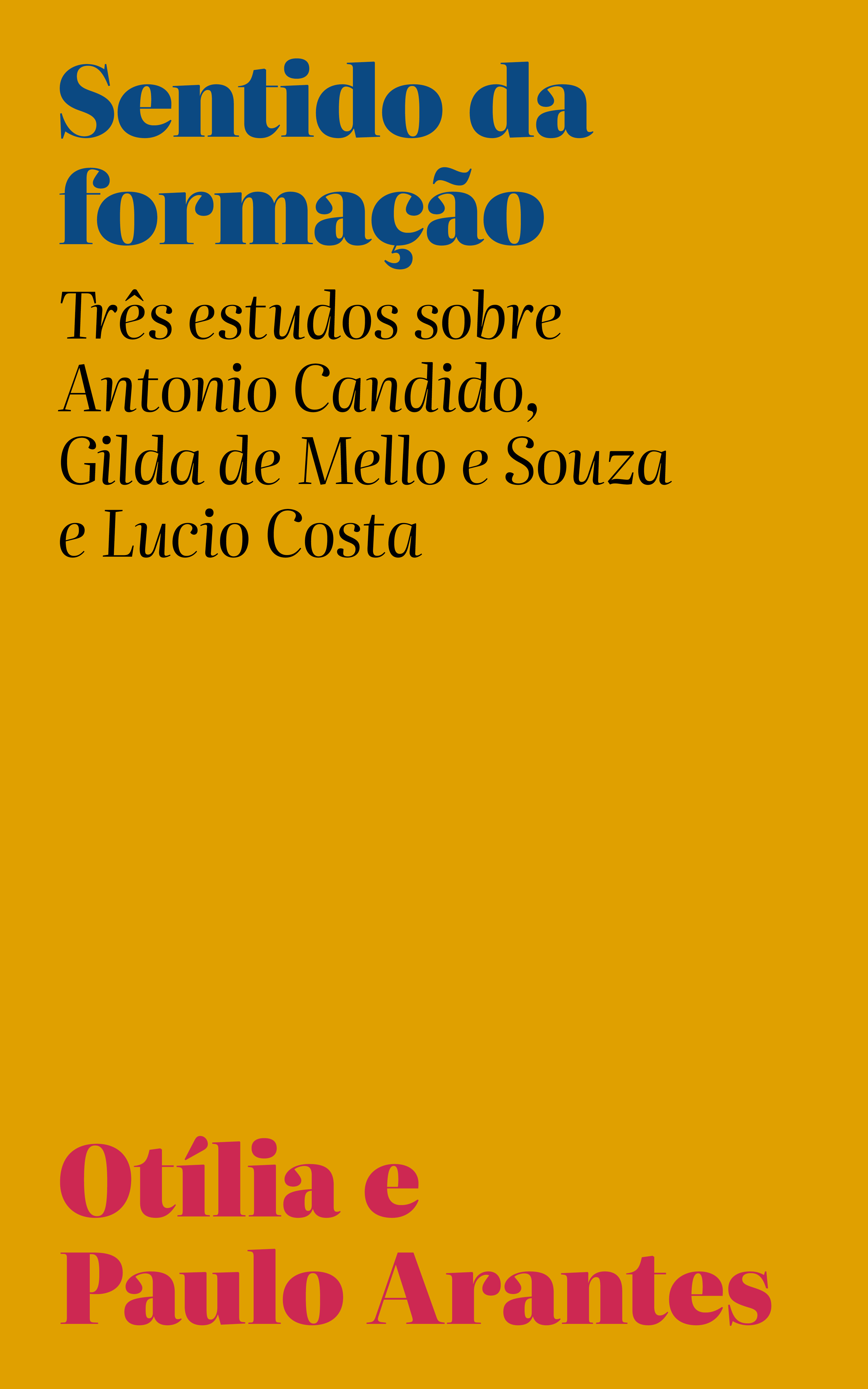The Meaning of Formation
Three studies on Antonio Candido, Gilda de Mello e Souza and Lucio Costa
1997
Synopsis
The concept of formation has been “a true national obsession”, we are told right at the beginning of The Meaning of Formation. From the 1930s to the 1950s, Brazilian society and its structures were dissected in historical-economic, anthropological, and aesthetic terms by intellectuals who, each in their own way, sought to establish and understand a peripheral, displaced, and (consequently) different national situation. Therefore, Caio Prado Jr.’s Formação do Brasil Contemporâneo (The Formation of Contemporary Brazil) outlined for the first time, in (consequently) Marxist terms, the social structure bequeathed by colonization; Celso Furtado’s Formação Econômica do Brasil (The Brazilian Economic Formation) explained the meanings of backwardness and the deadlocks of underdevelopment; and Raymundo Faoro’s Formação do Patronato Político Brasileiro (The Formation of Brazilian Political Patronage) revealed the social strata in which our political elites were anchored. It was in 1959, a few years before the 1964 coup d'état, that Antonio Candido gathered this accumulated intellectual experience from the social sciences and Brazilian essay-writing (including the pioneering works of Gilberto Freyre and Sérgio Buarque) and published Formação da Literatura Brasileira (The Formation of Brazilian Literature), bringing those same concerns to the field of cultural analysis and inaugurating the critical tradition that this book addresses to investigate its assumptions.
From Antonio Candido to Roberto Schwarz, ‘formation’ meant a remarkable leap in the cultural and political understanding of Brazil, emphasizing the need to analyze how the aesthetic formalization process of a specific historical experience takes place. As part of this new tradition—contemporary of the already stabilized speculative achievements, Modernism, the subversive imagery of Cinema Novo, the debate over the meanings of abstraction in the visual arts, and the boldness of the New Architecture—and as a result of that leap, the role of the critic guided by what we can now call the dialectic ideals of the concept of formation was redefined: understanding the vicissitudes of the cultural experience in the periphery of capitalism by transcending expert analysis (but not dismissing it) in order to respect the relative independence of the object, collecting the dispersed and fragmented knowledge from the humanities in the contemporary context.
It is within this tradition and these assumptions that the reader will find The Meaning of Formation, a study that analyzes the figuration of the Brazilian cultural experience in three different fields (literature, painting, and architecture) by addressing aspects of those nineteenth- and twentieth-century artistic movements as well as the views and attitudes of their first main critics: Antonio Candido, Gilda de Mello e Souza, and Lúcio Costa. In this book, the authors review, through a very careful reading, how our best critics and our best artists created ways to overcome a certain state of dependence, seeking to establish, based on previous historical examples, an evolutionary line to clarify the specific driving forces of the Brazilian cultural life—which is occasionally defined here as the Brazilian difference. After all, this is what this book is about, the “gradual figuration of a society depressed by its own image”, a society where, both in the past and in the present, letters, shapes, backgrounds, plans, and monuments are looking for a country.
(Flap text written by Francisco Alambert)
This virtual edition of The Meaning of Formation partially reproduces the edition published by Paz e Terra in 1997. The essays on Antonio Candido and Lúcio Costa have been kept in their entirety; the essay on Gilda de Mello e Souza does not include the appendixes (which can be found in the book devoted to Gilda, published as part of this collection). Also included at the end is an interview by Ricardo Musse about the book from the 4th issue of Praga magazine (1997).
Keywords:
Formation, National Reality, Brazilian Illustration, Grupo Clima, Antonio Candido, José Veríssimo, Eliot, Lúcia Miguel Pereira, Sílvio Romero, Gilda de Mello Souza, Lúcio Costa, Brazilian Painting, Almeida Jr, Mário de Andrade, Roberto Schwarz, Brazilian Modern Architecture, Oscar Niemeyer, Brasilia.

Series
License

This work is licensed under a Creative Commons Attribution-NonCommercial-NoDerivatives 4.0 International License.


